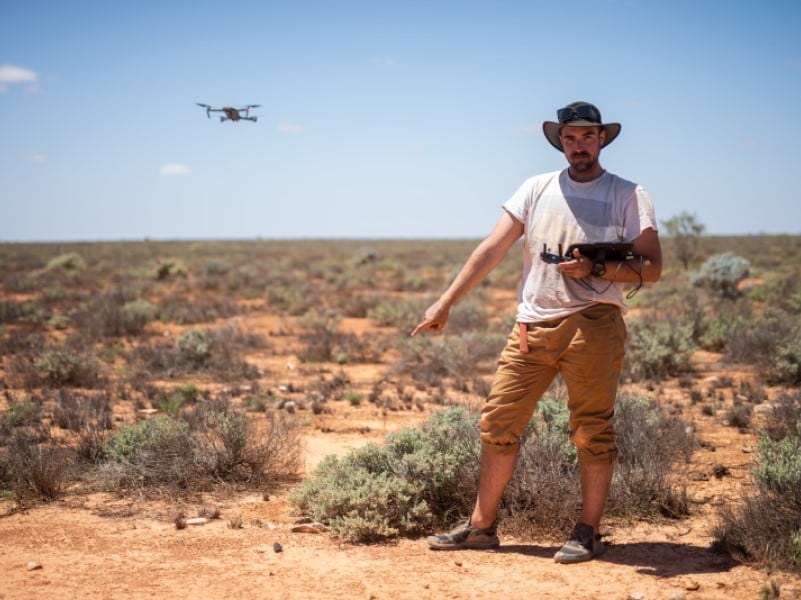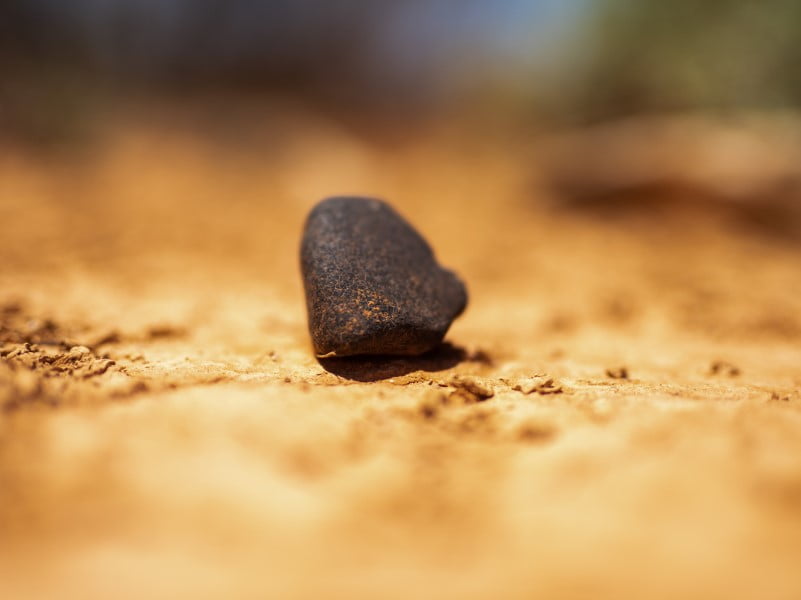Researchers at Curtin University have recovered a meteorite in the Western Australian outback using a new drone-mounted AI scanner.
The meteorite was recovered at the end of last year in the southeast of the state by lead researcher graduate student Seamus Anderson, who is at the university’s Space Science and Technology Centre (SSTC).

Images were taken by the drone as it flew over the fall zone and then processed on a computer using an algorithm that searches for meteorites or ‘resembling objects’. Mr Anderson said the successful deployment of this method could greatly increase the number of meteorites that are recovered, especially when combined with the tracking capabilities of the SSTC’s Desert Fireball network.
“Meteorite searches usually involve a group of people walking over a large, predicted impact area, but our new method requires only about one tenth the amount of labour and time and has a much higher likely success rate, which is evident in the fact we located and recovered the meteorite within four days of being on site at Kybo Station,” Mr Anderson said.
Every meteorite is filled with material that indicates which part of the solar system they originated from, which can be used to build a more complete understanding of the geology of the solar system. Further, Mr Anderson said that increasing meteorite recovery not only has the potential to facilitate scientific research, but also presents significant commercial opportunities.
“New solutions such as our drone technique help make investments in space science and the study of meteorites more cost-effective and impactful,” Mr Anderson said.
“Beyond increasing our understanding of the solar system, the study of meteorites is useful for many reasons. For example, meteorites often contain a higher concentration of rare and valuable elements such as cobalt, which is crucial to the construction of modern batteries.

“Also, by gaining a better understanding of how extra-terrestrial material is distributed throughout the solar system, we may one day mine asteroids for precious resources, instead of scrounging for the finite amounts of them on Earth and perhaps harming precious ecosystems in the process.
“Other potential applications for our new approach using drones and artificial intelligence include wildlife management and conservation, as our model could be easily retrained to detect objects other than meteorites, such as plants and animals.”
The full research paper can be accessed here.
This project received financial support from Curtin University’s Desert Fireball Network meteorite research group, which has received funding through the Australian Research Council’s Discovery Program.
Editor’s note: This story was edited to clarify how the project was funded





